The Secrets of Carb Loading for a Triathlon Race
 Karen Parnell
March 22, 2022
Karen Parnell
March 22, 2022
The Secrets of Carb Loading for a Triathlon
As with all aspects of training for and racing triathlons the science backed evidence changes over time as more and more studies are completed. This blog looks at the latest evidence based advise on carb loading before a triathlon.
A carbohydrate-loading diet, also called a carb-loading diet, is a strategy to improve your athletic performance for endurance events by increasing the amount of fuel stored in your muscles.
Carbohydrate loading occurs when you eat a high carbohydrate "training diet" while you scale back your activity level in the days before an event.
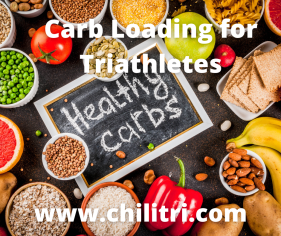
Purpose of Carb Loading
Any physical activity requires carbohydrates for fuel. For most recreational activity, your body uses its existing energy stores for fuel.
But when you engage in long, intense athletic events, your body needs extra energy to keep going. The purpose of carbohydrate loading is to give you the energy you need to complete an endurance event with less fatigue, improving your athletic performance.
Do you know how much carbohydrates, fat and protein you need every day? This BMR and Macros calculator will help.
Carbohydrate loading may be most beneficial if you're an endurance athlete such as a triathlete preparing for an event that will last 90 minutes or more (so Olympic distance and above). Other athletes generally don't need carbohydrate loading. It's usually enough to get about half of your calories from carbohydrates.
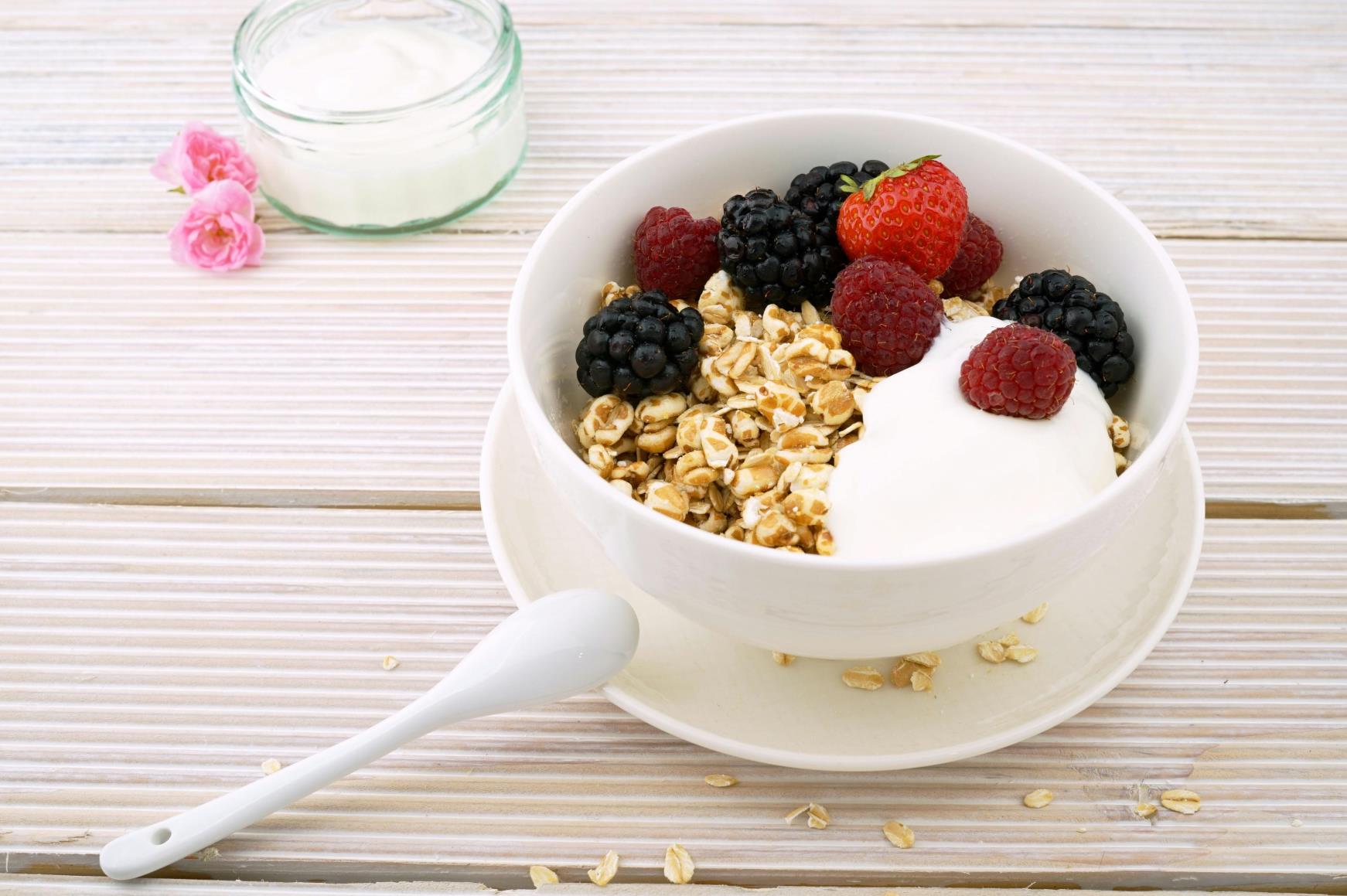
Would like some recipe ideas? Check out our FREE recipes books.
The Role of Carbohydrates
Carbohydrates, also known as starches and sugars, are your body's main energy source. Complex carbohydrates include legumes, grains and starchy vegetables, such as potatoes, peas and corn. Simple carbohydrates are found mainly in fruits and milk, as well as in foods made with sugar, such as candy and other sweets.
During digestion, your body breaks down carbohydrates into sugar. The sugar enters your bloodstream, where it's then transferred to individual cells to provide energy. Sugar is stored in your liver and muscles as glycogen — your energy source.
Increase your Energy Storage
Your muscles normally store only small amounts of glycogen — enough to support you during recreational exercise activities.
If you exercise intensely for more than 90 minutes, your muscles may run out of glycogen. At that point, fatigue might set in, and your performance may suffer.
But with carbohydrate loading, you may be able to store more energy in your muscles. This may give you the stamina to make it through longer endurance events. But you'll still need to consume some energy sources during your event.
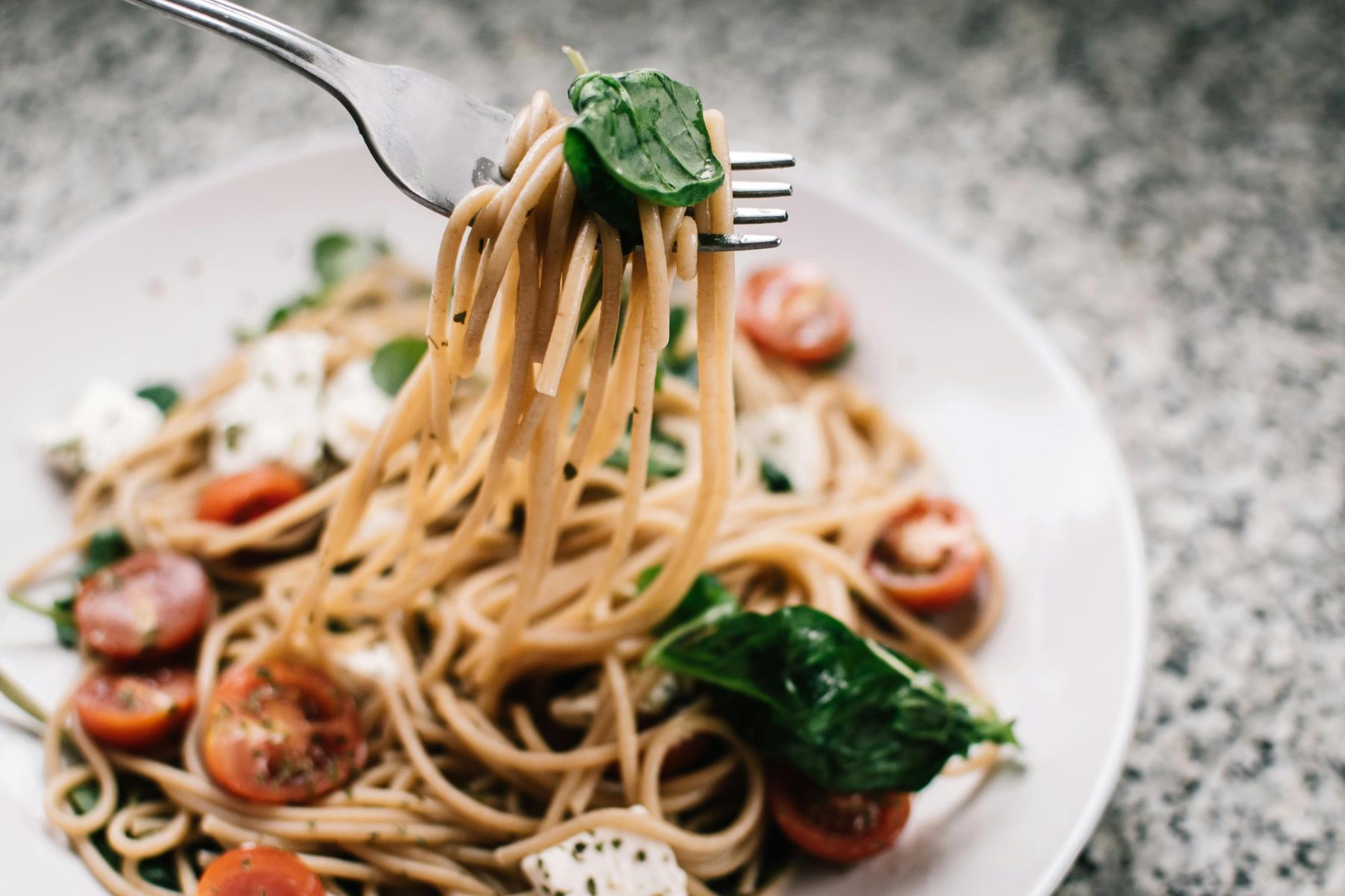
Would like some recipe ideas? Check out our FREE recipes books.
Carbohydrate loading
Carbohydrate loading is done the week before a high-endurance activity. One to three days before the event, increase your carbohydrate intake to about 8 to 12 grams of carbohydrate per kilogram of body weight.
Cut back on foods higher in fat to compensate for the extra carbohydrate-rich foods.
Also scale back your training for three to four days before the event (your taper). The combination of eating more carbohydrates and tapering activity appear to boost muscle glycogen stores.
How many carbs you need depends on your total calorie goal as well as your sport. For most athletes, 5 to 7 grams of carbohydrate per kilogram of body weight daily is right for general training. (Note that 1 kilogram equals 2.2 pounds.) Endurance athletes may need up to 12 grams per kilogram.
The day before your event, eat lower fibre foods to ease digestion and make sure your stomach and gut is ready for race day. No new foods and eat only what you know you can tolerate.
Eat foods that agree with your stomach. The fat content should be kept low to keep gut residue low and ease the transit of food through the gut. Low fibre is also desirable so that you can be happy to start your race without concerns about needing the toilet later into the day.
Go into the race with a good fuelling and hydration plan that you’ve practiced over the course of your training and your race simulations, long bricks and practice races.
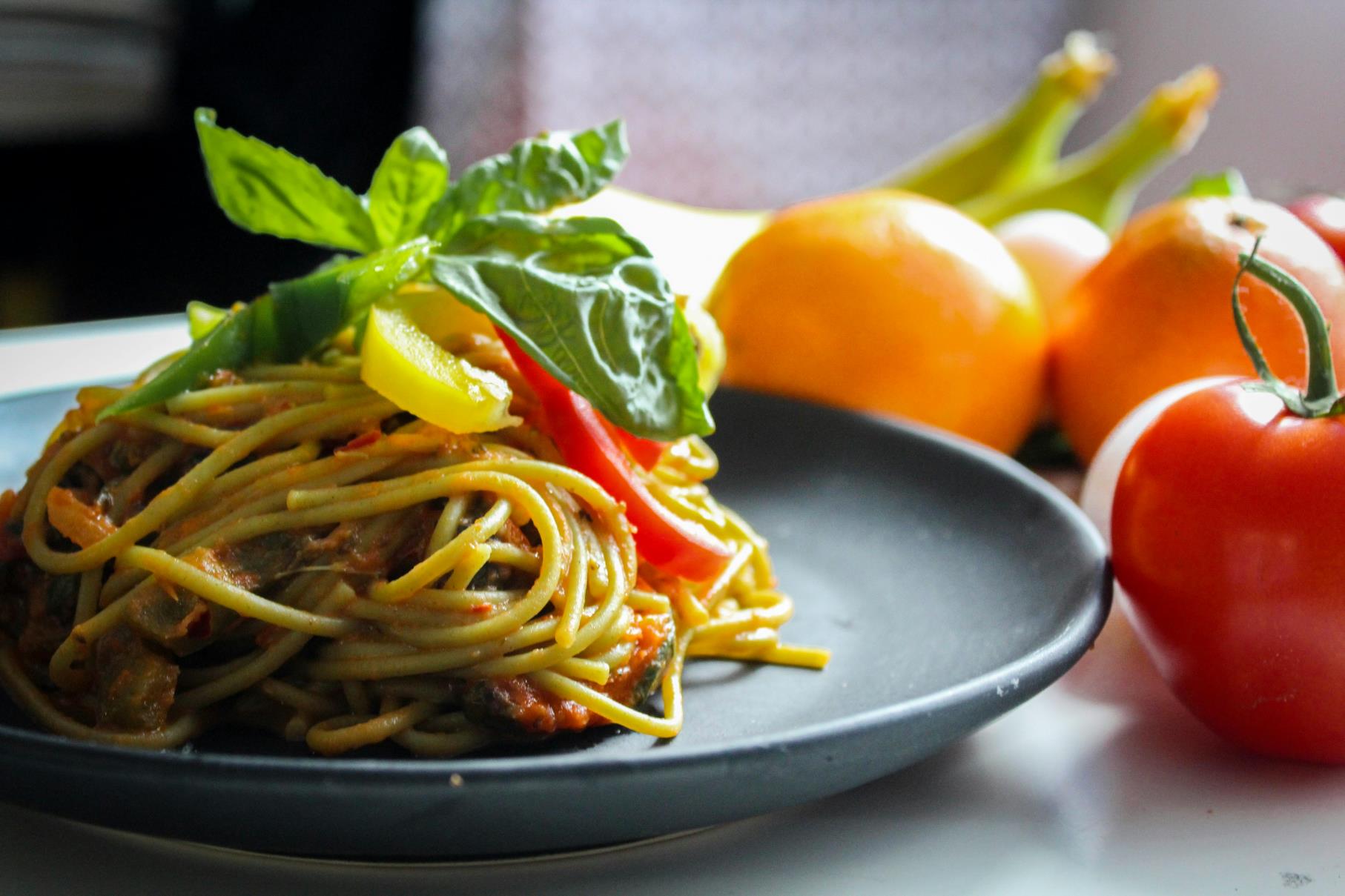
Would like some recipe ideas? Check out our FREE recipes books.
What foods are good for carb loading?
- Anything made with grains: Rice, pasta, cereal, oatmeal, bread, etc.
- Fruit and fruit juice
- Starchy vegetables: Potatoes, sweet potatoes, corn, peas, etc.
- Beans, lentils, legumes
- Milk and yogurt
- Sweets and desserts (consume in moderation–these are not high in beneficial nutrients, but can be great for a day or two before your race)
Pay attention to your plate here. Carb load correctly and don't eat too much fat, fibre or protein and make sure you are eating the right carbs. At this point, a little over 70 percent of your calories should be coming from easy-to-digest carbs like white rice and potatoes.
If you’re used to getting most of your calories in one big meal, be prepared to make adjustments. You won’t be able to consume enough carbohydrates during dinner the night before a race – a lot of races still have pasta parties the night before and this may not work for you. Plan on eating a bigger than normal breakfast and lunch, and fitting in snacks between meals.
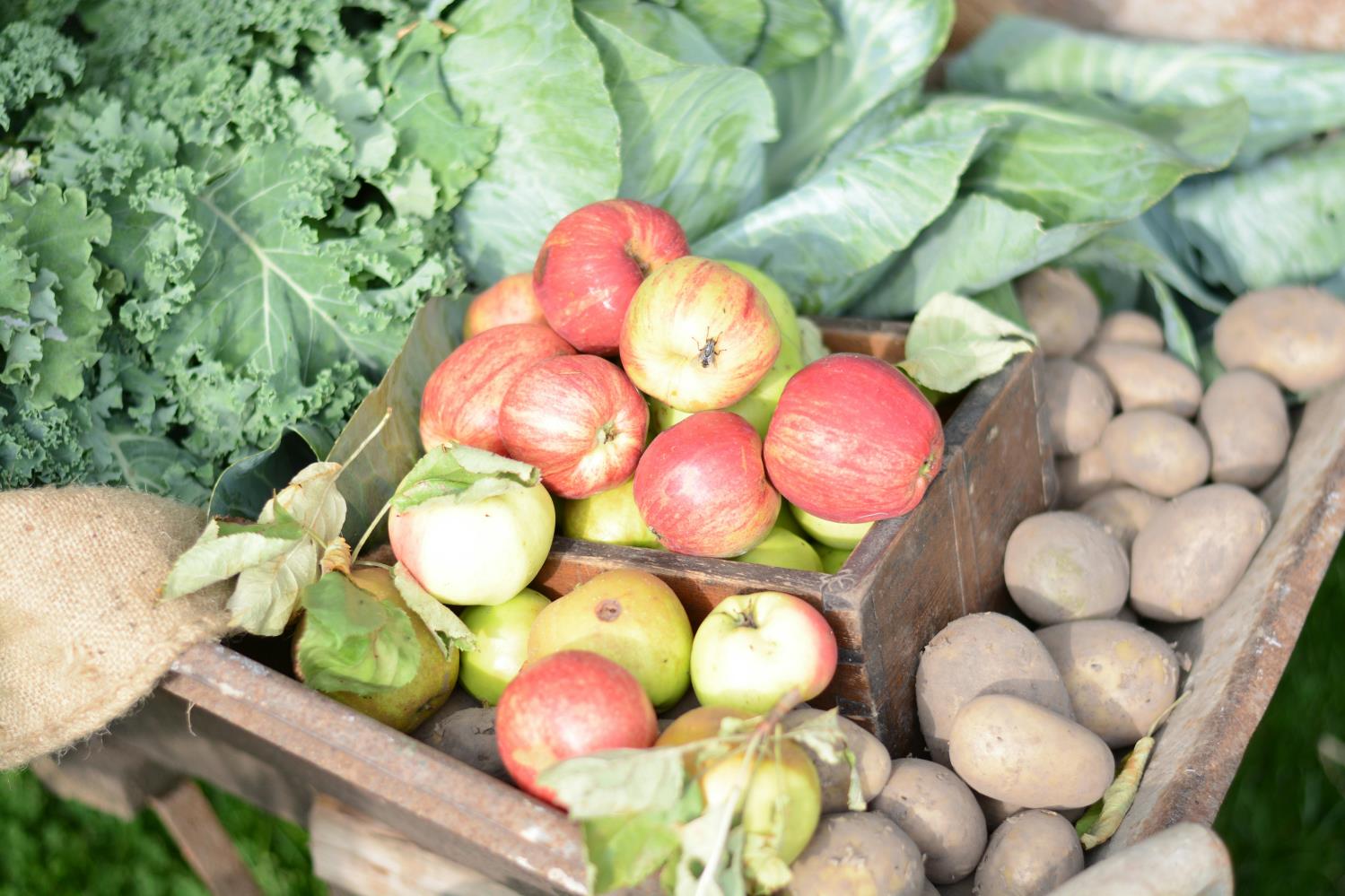
Photo by Jakob Andersson
Would like some recipe ideas? Check out our FREE recipes books.
Sample Carbohydrate-loading Meal Plan
Here's a sample carbohydrate-loading meal plan for an athlete who weighs 170 pounds (77 kilograms). It's based on 4.5 grams of carbohydrates for each pound (10 grams per kilogram) of body weight.
You can tweak this simple carbohydrate loading meal plan to suit your own tastes and nutritional needs.
NOTE: Carbohydrate loading will most likely cause body mass to increase by approximately 2kg. For every extra gram of glycogen stored you will also store 2g of water. This can be a concern for many athletes, but the potential negatives of setting off slightly heavier are far outweighed by the potential performance benefits
Sample Carb Loading Meal Plan
Breakfast
Milk, fat-free (12 oz/354ml): 18 grams carbs and 125 calories
1 plain bagel (4.2 ounces): 52 grams carbs and 260 calories
Peanut Butter (2 tablespoons): 7 grams carbs and 191 calories
Honey (2 tablespoons): 35 grams carbs and 128 calories
Banana (medium): 27 grams carbs and 105 calories
Morning Snack
Crunchy raisin and almond cereal and low fat milk (1 cup/28g): 32 grams carbs and 360 calories
Fruit juice (12 oz/354ml): 55 grams carbs and 225 calories
Lunch
Fat reduced chocolate milk (12oz/354mll): 45 grams carbs and 285 calories
4 slices of white bread: 49 grams carbs and 266 calories
Chicken breast, roasted without skin (1/2 breast): 0 grams carbs and 187 calories
Romaine lettuce, shredded (1/4 cup/72g): 0.5 grams carbs and 2 calories
Red tomato slices (1/2 cup/114g): 2 grams carbs and 11 calories
Light Mayonnaise (2 tablespoons): 3 grams carbs and 71 calories
Tortilla chips, low-fat, baked (1 ounce/28g): 23 grams carbs and 118 calories
Baby carrots (12): 10 grams carbs and 42 calories
Afternoon Snack
Low fat fruit yogurt (8 ounces/226g): 47 grams carbs and 250 calories
Low fat fruit granola (1/2 cup/55g) 33 grams carbs and 157 calories
Blueberries (1 cup/70g): 21 grams carbs and 83 calories
Cranberry juice, unsweetened (12 ounces/354ml): 42 grams carbs and 156 calories
Dinner
Wilde Atlantic salmon, baked (3 ounces/85g): 0 grams carbs and 155 calories
Whole wheat dinner roll (2 rolls): 29 grams carbs and 151 calories
Fat free milk (12 ounces/354ml): 18 grams carbs and 125 calories
Salad of:
Romaine lettuce, shredded (2 cups/140g): 3 grams carbs and 16 calories
Green bell pepper (1/4 cup/37g): 2 grams carbs and 7 calories
Green apple, chopped (1 medium): 25 grams carbs and 95 calories
Dried cranberries (1/3 cup/130g): 33 grams carbs and 130 calories
Walnuts, chopped (1/4 cup/25g): 4 grams carbs and 191 calories
Asiago cheese, shredded (1 ounce/28g): 1 gram carbs and 134 calories
Reduced fat salad dressing (2 tablespoons): 6 grams carbs and 55 calories
Evening Snack
Strawberries (1 cup/166g): 11 grams carbs and 46 calories
Sorbet, any flavour (1 ½ cups/225g): 78 grams carbs and 416 calories
Total: 754.5 grams carbs and 4,543 calories
Source: Nutritionist Pro, 2018
Would like some recipe ideas? Check out our FREE recipes books.
Carb Loading Results
Carbohydrate loading may give you more energy during an endurance event. You may feel less fatigued and see an improvement in your performance after carbohydrate loading. But carbohydrate loading isn't effective for everyone.
Other factors can influence your athletic performance or interfere with the effectiveness of your carbohydrate-loading strategy, including how fit you are, how well you hydrate and how intensely you exercise. Even with carbohydrate loading, you still may feel muscle fatigue.
For men, a carbohydrate-loading diet can increase the levels of glycogen stored in the muscles as much as 100 percent of your normal amount. Women may need to consume more calories than usual during carbohydrate loading to get the same benefits as men do.
Note that most studies on carb loading have been done on men – there is not much data for women. There is some suggestion that there are certain periods of the menstrual cycle that may limit the effectiveness of carb loading in women. But women should do it anyway.
Despite carbohydrate loading, you still need to replenish your body's energy during endurance events to maintain your blood sugar levels. You can do this by periodically consuming sports drinks, gels, or bars, fruit, or hard or chewy candies during your event at the rate of 30 to 60 grams every hour or two. And don't forget to eat carbohydrate-rich foods after your endurance event, too, to replenish your glycogen stores.
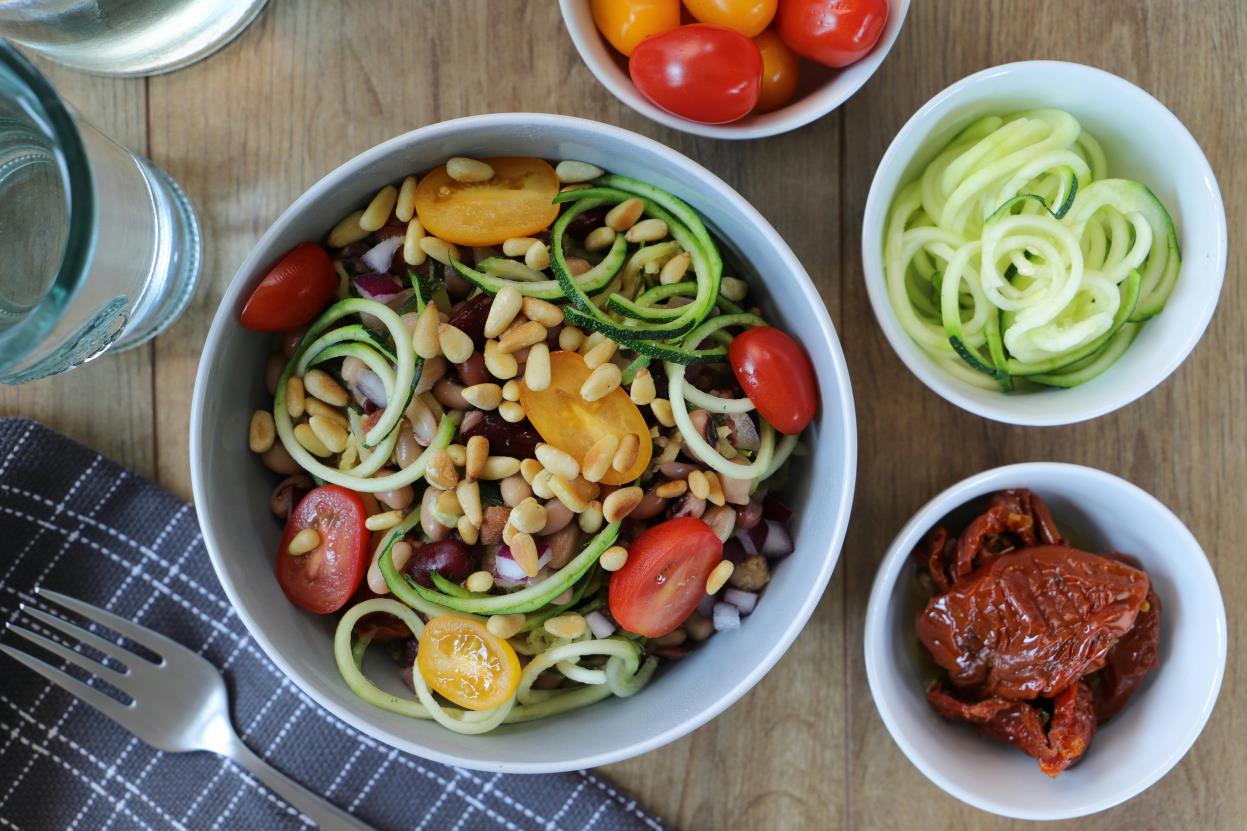
Photo by Nic Wood
Would like some recipe ideas? Check out our FREE recipes books.
Risks of Carb Loading
Carbohydrate loading isn't right for every endurance athlete. It's a good idea to consult your doctor or a registered dietitian before you start carbohydrate loading, especially if you have diabetes. You may also need to experiment with different amounts of carbohydrates to find what works best for you.
A carbohydrate-loading diet can cause some discomfort or side effects, such as:
- Digestive discomfort. You may need to avoid or limit some high-fibre foods one or two days before your event. Beans, bran and broccoli can cause gassy cramps, bloating and loose stools.
- Blood sugar changes. Carbohydrate loading can affect your blood sugar levels. If you have diabetes, monitor your blood sugar during training or practices to see what works best for you. And talk to your dietitian or doctor to make sure your meal plan is safe for you.
Common Mistakes of Carb Loading
Many athletes fail to carb load properly or adequately. Here are some common issues:
1. You must taper while carb loading – continue exercising at a high intensity, and your body will continue to gobble up everything you throw at it, rather than storing additional energy.
2. It is not an excuse to eat everything in sight. You must stick to high carb, low fat foods. Consuming high fat foods will make it difficult to eat enough carbohydrate and may also result in gaining weight due to increased fat. You don’t want to feel sluggish on race day.
3. You must eat enough carbohydrate. This is more difficult than it sounds for an IRONMAN, because it’s a lot of carb (see sample IRONMAN diet below). Carb/Calorie counter apps like myfitnesspal can help to keep track of your carb intake.
4. In order to consume enough carbohydrate, you will need to reduce high fibre foods, and increase compact carb sources such as sugar, cordial, soft drink, sports drink, jam, honey, jelly and tinned fruit. If you don’t do this, you risk stomach upset, or struggling to eat enough as fibre increases food bulk and the feeling of fullness.
5. You will gain weight. Possibly even 2kg! Don’t worry about this (as long as you’re not doing (2) above) – it is all glycogen and water and will rapidly disappear on race day as your hungry muscles tuck into all that extra energy goodness.
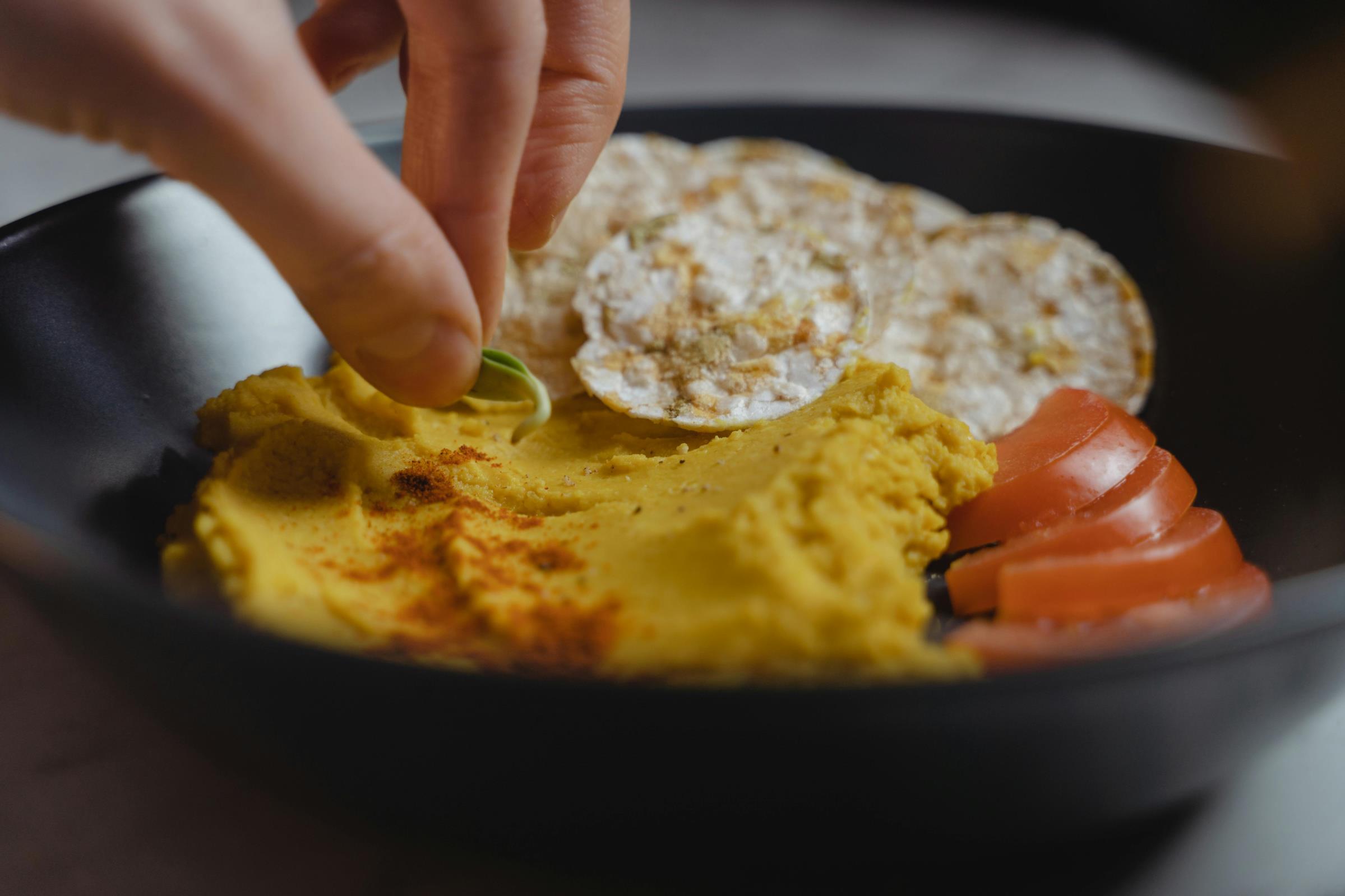
Photo by Tima Miroshnichenko
Would like some recipe ideas? Check out our FREE recipes books.
Sample Carb Loading Diet for an IRONMAN
The following diet plan (from the AIS) is suitable for a 70kg athlete wishing to carb load. It provides around 14,800 kJ, 630 g carbohydrate (this is 9g/kg carb), 125 g protein and 60g fat per day.
Breakfast
3 cups/54 grams of low-fibre breakfast cereal with 1½ cups/354 ml of reduced fat milk
1 medium banana
250ml orange juice
Snack
Toasted muffin with honey
500ml sports drink
Lunch
2 sandwiches (4 slices of bread) with filling as desired
200g tub of low-fat fruit yoghurt
375ml can of soft drink
Snack
Banana smoothie made with low-fat milk, banana and honey cereal bar
Dinner
1 cup/240ml of pasta sauce with 2 cups/400g of cooked pasta
3 slices of garlic bread
2 glasses of cordial
Late Snack
Toasted muffin and jam
500ml sports drink
Alternative Type of Carb Loading
Dr. John Berardi explains why carbo loading is easier than advertised and offers some simple tricks to help make this common pre-race practice even more effective. This is a non-traditional type of carb loading and you will need to experiment and see if it’s for you. Contact Dr. Berardi for more details.
Conclusion: How to Carb Load Properly
Mastering the art of carbohydrate loading can be a game-changer in your triathlon performance. By strategically increasing your carbohydrate intake and tapering your training in the days leading up to your race, you can maximize your muscle glycogen stores, providing the sustained energy needed to excel in endurance events.
Remember to focus on consuming complex carbohydrates, monitor your body's response, and fine-tune your approach during training to discover what works best for you. With thoughtful planning and practice, you'll be well-fueled and ready to achieve your triathlon goals. Happy racing!
Now you know some nutrition strategies for the week before your race you can plan your week. Do you know how you will fuel your race day?
This blog will help you plan your nutrition and hydration during your race and after.
Are you still confused about your training taper? This blog will help you plan your taper.
Karen Parnell is a Level 3 British Triathlon and IRONMAN Certified Coach, 8020 Endurance Certified Coach, WOWSA Level 3 open water swimming coach and NASM Personal Trainer and Sports Technology Writer.
Karen has a post graduate MSc in Sports Performance Coaching from the University of Stirling.
Need a training plan? I have plans on TrainingPeaks and FinalSurge:
I also coach a very small number of athletes one to one for all triathlon and multi-sport distances, open water swimming events and running races, email me for details and availability. Karen.parnell@chilitri.com
Get your FREE Guide to Running Speed and Technique
Get your FREE Swim Workouts for Triathletes E-book
Get your FREE Open Water Swimming Sessions E-Book
You can use this Macro Calculator for athletes to calculate your needs.
Would like some recipe ideas? Check out our FREE recipes books.
If you are interested in training for a triathlon get in touch.
Handy Guide to Carbohydrates in Foods
This section will help you appreciate the carbohydrate levels of different foods so you know you are eating the right amount.
15g Carbohydrates
- 1 slice bread
- 1 oat-based muesli bar
- 1 cup/110g fresh fruit salad
- 1 large apple
25g Carbohydrates
- 1 sports gel
- 2 fresh dates
- 1 Tbs Honey
30g Carbohydrates
- 2 thin slices of bread with 2 tsp honey
- 400ml orange juice
- ¾ cup/27g cereal with light milk
- 1 pita wrap or tortilla
- 2 regular slices raisin bread
- 220g tin spaghetti
- Banana in a slice of bread
- 500ml Powerade
- 2 large slices of bread
- 200g tub low fat yoghurt
- Muesli bar + large piece of fruit
- 2 oat-based muesli bars
- 1 large bread roll
- ¾ cup/150g cooked pasta
- 1 cup/133g sweet potato
40g Carbohydrates
- 2 slices of bread with jam
- 1 cup/200g cooked pasta
- 1 banana in a bread roll
60g carbohydrates
- Large banana and a 600ml Powerade
- 5 thin slices of bread
- 4 slice bread + 1 piece fruit
- 2 bread rolls with sandwich fillings
- 200g yoghurt and 1 cup tinned fruit OR fruit salad
80g Carbohydrates
- 2 cups/400g cooked pasta
- 1.5 cups/375g cooked rice
- 1 cup cooked rice/250g and a tortilla
- 1.5 cups pasta/300g + 1 large potato
- 1.5 cup pasta/300g + 2 slice bread
- 6 Weetabix with milk
FAQ: The secrets of carb loading for a triathlon event
What is carb loading?
Carb loading, also known as glycogen loading, is a strategy used by endurance athletes to maximize glycogen stores in the muscles and liver before a race. It involves increasing carbohydrate intake in the days leading up to the event to enhance endurance performance.
Why is carb loading important for a triathlon event?
Carbohydrates are the primary fuel source for endurance exercise. By increasing carbohydrate intake before a triathlon event, you can maximize glycogen stores, which can enhance endurance, delay fatigue, and improve overall performance.
When should I start carb loading before a triathlon event?
It is typically recommended to start carb loading two to three days before the event. This allows enough time for your body to store glycogen effectively.
How should I calculate my carbohydrate intake during carb loading?
The recommended carbohydrate intake during carb loading is generally around 7-12 grams per kilogram of body weight per day. For example, if you weigh 70 kilograms, your carbohydrate intake would be between 490-840 grams per day.
What types of carbohydrates should I focus on during carb loading?
It is important to consume mainly complex carbohydrates, such as whole grains, fruits, vegetables, and legumes. These provide sustained energy and essential nutrients. However, it is also acceptable to include some simple carbohydrates, such as sports drinks, gels, or white bread, to quickly replenish glycogen stores.
Should I reduce my fat and protein intake during carb loading?
While carbohydrates should be the main focus during carb loading, it is still important to maintain a balanced diet. Moderate protein intake is necessary for muscle repair and recovery, and healthy fats provide essential nutrients. However, it's a good idea to prioritize carbohydrates and slightly reduce fat and protein intake during the carb-loading phase.
How can I incorporate carb-rich foods into my pre-race meals?
Here are some examples of carb-rich foods to include in your pre-race meals:
- Whole grains: Brown rice, quinoa, whole wheat pasta, whole grain bread.
- Fruits and vegetables: Bananas, berries, sweet potatoes, spinach, carrots.
- Legumes: Lentils, beans, chickpeas.
- High-carb snacks: Energy bars, sports drinks, gels, oatmeal, cereal.
How should I approach carb loading if I have specific dietary restrictions?
If you have specific dietary restrictions or follow a special diet (e.g., gluten-free, vegan), you can still carb load effectively. Look for alternative carb sources that align with your dietary needs. For example, gluten-free grains, plant-based protein sources, and fruits and vegetables that meet your requirements.
Are there any other important considerations for carb loading?
Here are a few additional considerations:
- Stay hydrated: Hydration is crucial for effective carb loading. Adequate hydration helps with carbohydrate absorption and glycogen storage. Drink plenty of fluids throughout the carb-loading phase.
- Don't overeat: While it's important to increase carbohydrate intake, avoid overeating or consuming excessive calories. Maintain a balanced diet and listen to your body's hunger and fullness cues.
- Practice during training: It's beneficial to practice your carb-loading strategy during your longer training sessions to determine what foods and quantities work best for you and avoid any digestive issues on race day.
Remember, individual needs may vary, and it's important to experiment and find what works best for you. Consulting with a sports nutritionist or dietitian can provide personalized guidance based on your specific needs, goals, and dietary restrictions.
References and Notes
If using any food supplements, hydration or protein powders always check them on the UKAD website supplements checker.
https://www.nswis.com.au/nutrition/how-to-easily-pre-load-energy-for-performance/
https://www.ais.gov.au/nutrition
#carbloading #triathlon #racepreparation #triathlonnutrition #nutrition #hydration #chilitri #triathlon
#traithlontrainingplans #swimmingtrainingplans #runningtrainingplans

.jpg)